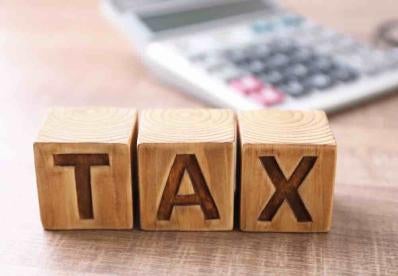On August 22, 2022, US President Joe Biden signed the Inflation Reduction Act of 2022 (the Act) into law, which includes $369 billion in energy and climate spending with an unprecedented focus on clean hydrogen. Specifically, the Act introduces a clean hydrogen production tax credit (PTC) and broadens the existing investment tax credit (ITC) in Section 48 of the Internal Revenue Code (Code) to apply to hydrogen projects and standalone hydrogen storage technology. The Act further bolsters the hydrogen economy by enabling taxpayers to stack bonus credits and to capitalize on direct pay, as well as allowing the transferability of hydrogen-related tax credits.
IN DEPTH
CLEAN HYDROGEN PRODUCTION TAX CREDITS
The Act amends the Code to create a new Section 45V, which introduces a PTC for the production of “qualified clean hydrogen” during a 10-year period commencing on the date of when the qualified clean hydrogen facility in question was placed in service.1
Amount
The four-tiered incentive in any taxable year is calculated at an amount equal to $0.60/kilogram (kg) of qualified clean hydrogen produced multiplied by an applicable percentage based on the resulting lifecycle greenhouse gas emissions rate as follows:
|
kgs of CO2e Produced per kg of QCH |
Applicable Percentage |
|---|---|
|
2.5 – 4 kg of CO2e |
20% |
|
1.5 – 2.5 kg of CO2e |
25% |
|
0.45 – 1.5 kg of CO2e |
33.4% |
|
0 kg – 0.45 kg of CO2e |
100% |
The amount of the credit shall be multiplied by five in the event (1) the construction of the qualified clean hydrogen facility begins prior to 60 days after the US Secretary of the Treasury publishes guidance with respect to wage and apprenticeship requirements, and the prevailing wage requirements as set out in the Act are satisfied in the alteration or repair of such facility which occurs after such date. Or (2) the prevailing wage requirements and apprenticeship requirements as set out in the Act are satisfied with respect to the construction, alteration or repair of the qualified clean hydrogen facility in question (through the end of the PTC 10-year period).2
Definitions
The Act defines “qualified clean hydrogen” as hydrogen that is “produced through a process that results in a lifecycle greenhouse gas emissions rate not greater than four kilograms of CO2e per kilogram of hydrogen.” Such hydrogen must be produced in the United States in the taxpayer’s ordinary course of trade for sale or use and must be verified by an unrelated third party.
Furthermore, to meet the requirements of a “qualified clean hydrogen production facility,” the facility’s construction must begin before January 1, 2033, must be owned by the taxpayer and must produce qualified clean hydrogen.3
No Overlap with 45Q Tax Credits
The Act stipulates that no PTC under Section 45V shall be available for qualified clean hydrogen produced at a facility for which a carbon capture tax credit under Section 45Q is allowed in any current or prior taxable year. This means that a taxpayer may not stack Section 45V and Section 45Q credits where Section 45Q credits are available.4
Clean Hydrogen Investment Tax Credits
In addition to the PTC for qualified clean hydrogen, the Act also introduces an ITC for clean hydrogen by allowing taxpayers to treat specified clean hydrogen production facilities as energy property under Section 48.5
Amount
The four-tiered incentive in any taxable year is equal to the energy percentage of the cost basis of each specified clean hydrogen production facility placed in service during such taxable year as follows:
|
kgs of CO2e Produced per kg of QCH |
Energy Percentage |
|---|---|
|
2.5 – 4 kg of CO2e |
1.2% |
|
1.5 – 2.5 kg of CO2e |
1.5% |
|
0.45 – 1.5 kg of CO2e |
2% |
|
0 kg – 0.45 kg of CO2e |
6% |
The amount of the credit shall be multiplied by five in the event (1) the energy project in question has a maximum net output of less than one megawatt of electrical or thermal energy, (2) the construction of the energy project in question begins prior to 60 days after the Secretary of the Treasury publishes guidance with respect to wage and apprenticeship requirements, or (3) the prevailing wage and apprenticeship requirements as set out in the Code are satisfied with respect to the construction, alteration or repair (through the end of the five-year recapture period following the date the project is placed in service) of the energy project in question.
In addition, such energy projects are also eligible for the 10% domestic content bonus credit amount and the 10% increase in credit rate for energy communities as set out in Section 48, resulting in potentially sizable incentives related to clean hydrogen projects.6
Definitions
For the purposes of the bonus multipliers set out in Section 48, “energy project” means a project consisting of one or more energy properties (i.e., specified clean hydrogen production facilities) that are part of a single project.
“Specified clean hydrogen production facility” is defined as a “qualified clean hydrogen production facility” (see above) (1) which is placed in service after December 31, 2022, (2) with respect to which (A) no tax credit has been allowed under Section 45Q (carbon capture tax credit) or 45V (QHC production tax credit), and (B) the taxpayer makes an irrevocable election to have the energy ITC apply, and (3) for which an unrelated third party has verified that the lifecycle greenhouse gas emissions rate for each kg of hydrogen produced at such facility does not exceed 4 kg of CO2e.7
No Overlap with 45Q or 45V Tax Credits
The new hydrogen credit under Section 48 provides that no credit shall be allowed under Section 45Q or Section 45V for any taxable year with respect to any specified clean hydrogen production facility (as defined directly above), meaning that taxpayers cannot stack these credits on top of the energy ITC of Section 48.8
Hydrogen Storage
In addition to the foregoing, the Act includes a new Section 48 ITC for “energy storage technology,” which means “property (other than property primarily used in the transportation of goods or individuals and not for the production of electricity) which receives, stores, and delivers energy for conversion electricity (or, in the case of hydrogen, which stores energy), and has a nameplate capacity of not less than 5 kilowatt hours.” As a result, standalone hydrogen storage technology is now eligible for the Section 48 ITC, as well as the corresponding wage/apprenticeship bonus multiplier, domestic content bonus credit amount and the increase in credit rate for energy communities.9
Direct Pay and Transferability
Another significant movement toward bolstering the hydrogen economy is the introduction of the ability to claim the value of the clean hydrogen PTC determined under Section 45V (as detailed above) through a tax refund as if it were an overpayment of taxes. For most credits, direct pay is only available for certain non-taxable entities but is available for all taxpayers in the case of the Section 45V credit. This direct pay mechanism will, theoretically, allow for project developers and sponsors to reap more of the benefits of hydrogen-related tax credits instead of having to share or transfer those benefits to other tax equity investors. Further, under the Act, these hydrogen-related credits would also be eligible, in the alternative, for transfer to unrelated persons in a non-taxable cash sale (another route that could simplify and reduce the costs associated with hydrogen-related technology and production facilities).10
Applied together, these hydrogen-related provisions provided by the Act create substantial incentives for developers and investors alike. Although only time will tell how this market will develop, specialists in the field of renewables believe the impact of the Act will be monumental in transitioning away from a fossil-fuel-driven economy and toward a clean hydrogen economy.
FOOTNOTES
1Inflation Reduction Act of 2022, H.R. 5376, 117th Cong. (the Act) § 13204.
2Id.
3Id.
4Id.
5Id.
6I.R.C. § 48.
7§ 48.
8§ 48.
9§ 48.
10Inflation Reduction Act of 2022, H.R. 5376, 117th Cong. (the Act) §§ 6417, 6418.






 i
i


